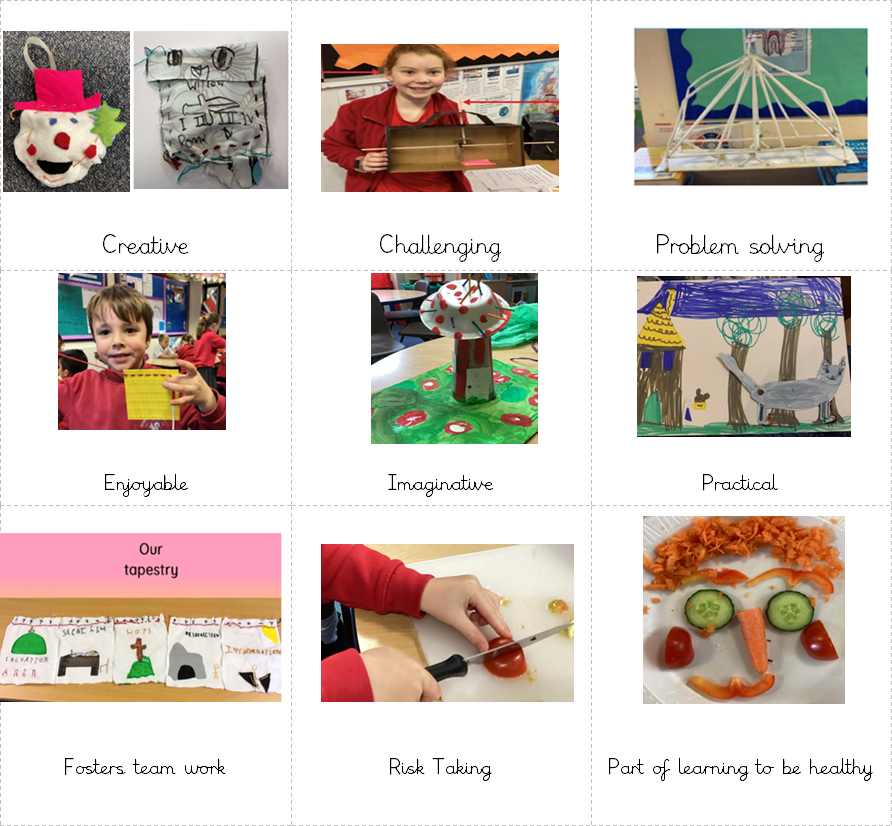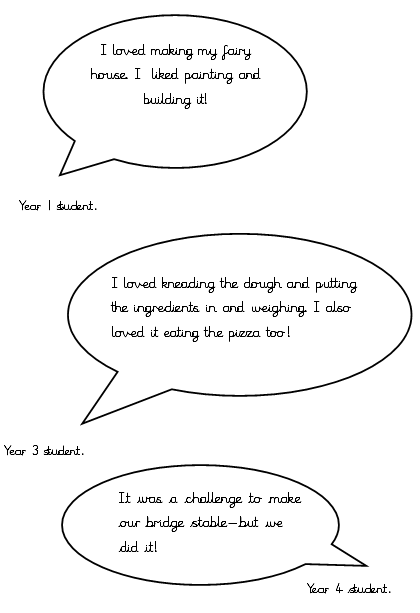Design Technology (DT)
Intent: Why teach Design Technology?
Design technology is a varied and creative subject which enables children to express themselves and develop specific skills in a range of contexts.
It encourages problem solving and critical thinking to find solutions to real life problems. It has clear links to a range of subjects including science, art, computing and maths.

Implementation: How is DT taught at Westbury on Trym CE Academy?
How do we teach Design Technology at Westbury-on-Trym?
At Westbury Primary, our design technology curriculum aims to develop key skills across both key stages enabling children to design, make and evaluate a range of products.
All design technology projects across the school follow a similar structure:
- We research and evaluate existing products
- Learn a new key skill relevant to the topic.
- Design a new product
- Make the product
- Evaluate the finished product.

Design Technology in EYFS.
In EYFS, DT skills are introduced formally in teacher led sessions and then incorporated into continuous provision. This enables children to build upon their knowledge and understanding through exploration and play.
Throughout the year, children are given simple projects which enable them to develop their designing and making skills. They are encouraged to verbally evaluate and discuss their designs with both teachers, TA’s and their peers. Both indoor and outdoor provision is used to enhance these opportunities. When selecting appropriate tools and techniques they will be guided and taught relevant safety rules such as how to use scissors or use a butter knife. Appropriate technical vocabulary is introduced at this early stage where appropriate.

Design Technology in Key Stage One and Two
In Key Stage One and Two children are taught at least three topic related projects focusing on key skills per year.
- Firstly, children are introduced to existing products which they explore and discuss. This enables the introduction of new vocabulary which will be essential for the design.
- Children are then taught a specific key skill which they will practice in readiness for making their own product.
- Following this, pupils will plan a design for a new version of the product. At this stage children are encouraged to verbalise and share their ideas, before drawing and labelling their plan.
- Next, the children will make their design using a wide range of materials and tools such as fabric, scissors, knives etc. Children are reminded of safety rules and techniques are shared and modelled by the teacher. During the making process, children are encouraged to gradually become more independent as the key stages progress.
- Finally, children evaluate their work. This is a key part of the process and pupils are encouraged to discuss their evaluation verbally as well as recording on paper. This aims to develop resilience when items needed altering and also enables children to celebrate successes.
Projects are recorded using a booklet which details each part of the process.
Children are encouraged to make their own design and as a result, the products created should be individual, unique and their own. Children also take part in whole school projects linked to other science subjects during STEM week such as ‘The Marble Run’ projects and ‘Boat Making’ project.

What do Our Children say about Design Technology?


